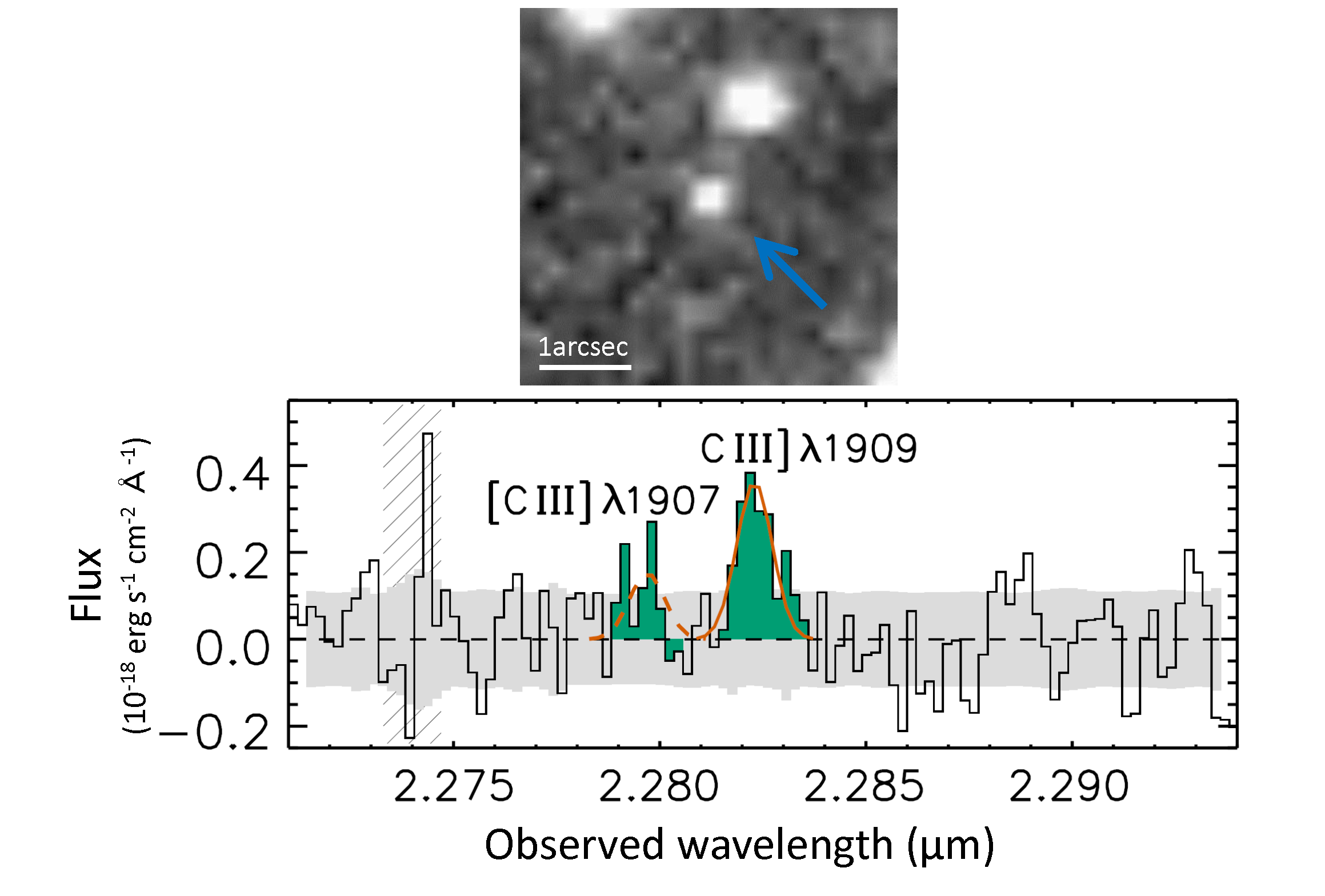An international team of astronomers, including Professors Linhua Jiang at the Kavli Institute for Astronomy and Astrophysics at Peking University and Nobunari Kashikawa at the University of Tokyo, obtained near-infrared spectra and successfully measured the redshift of a very faint galaxy 13.4 billion light-years away, the most distant astrophysical object known to date.
Using the Keck I telescope on Maunakea, the team carried out deep spectroscopic observations of the galaxy "GN-z11" in the near-infrared. GN-z11 was generally believed to be a very distant galaxy at a redshift greater than 10, probably closer to 11, based on existing data from the Hubble Space Telescope. But its exact redshift was unclear. In the high-quality spectra obtained from Keck, the team detected three emission lines from GN-z11 and determined the redshift to be 10.957, meaning that GN-z11 is located 13.4 billion light-years away. This is the most distant astrophysical object known to date (Figure 1).

Figure 1. The most distant galaxy GN-z11. (Top) Image of GN-z11 (pointed by the arrow) obtained with the Hubble Space Telescope. (Bottom) Keck near-infrared spectra of GN-z11. The doubly ionized carbon emission lines at rest-frame ~191 nm have shifted to about 2283 nm in the observed frame, indicating a redshift of 10.957. (Credit: Nobunari Kashikawa)
This research was based on observations made under the time exchange program between the Subaru Telescope and Keck Observatory.
This research was published in Nature Astronomy on December 14, 2020 as Linhua Jiang, Nobunari Kashikawa, Shu Wang, Gregory Walth, Luis C. Ho, Zheng Cai, Eiichi Egami, Xiaohui Fan, Kei Ito, Yongming Liang, Daniel Schaerer, and Daniel P. Stark, "Evidence for GN-z11 as a luminous galaxy at redshift 10.957".


